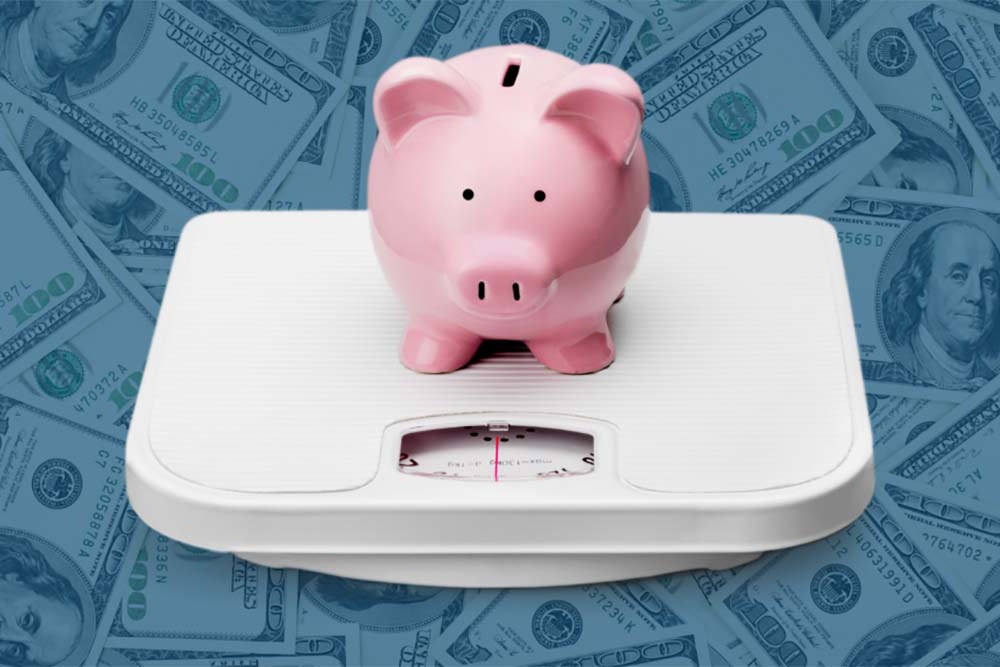To say that investors want to make a profit on their investment is a truism. Of course, investors want to make a profit! However, in the real estate world, there are several things to consider. Return on investment (ROI), capitalization rate (cap rate), and the 1%–2% rule — the list could go on. What are these different measurements and how do you use them?
1. ROI
In simple terms, return on investment (ROI) measures the percentage of return over a certain period of time. The formula includes debt service and the amount of money used to purchase the property instead of the entire property value.
This formula divides the annual cash generated by your property after you account for your operating expenses and the mortgage payment by the total amount of money you invested. It looks like this:
ROI = Annual Return/Total Investment
For example, say you are investing in a property of $100,000 that generates $10,000 before debt service. With a down payment of 25%, your total investment would be $25,000. The loan is $75,000 over 15 years at 3.75% for a monthly payment of $545.42 (principal and interest, or P&I).
$3,454.96/$25,000 = 0.13819 or 13.819%
A rental property with a higher ROI is typically the best investment. By using different down payment amounts, you will see the ROI change and you can decide how best to leverage your investment.
Investors focused on maximizing ROI will want to use as little money down as possible despite the lower annual return. That said, I typically advise investors to put some skin in the game by staking out good equity in the event that their market is seeing appreciation rise year over year. Higher down payments also generally receive more favorable rates from the banks.
2. Cap Rate
The cap rate is a formula that divides the net operating income (NOI) generated by the property before the debt service (P&I) by the property value or its asking price. The formula looks like this:
Cap Rate = NOI/Property Value
Debt for the mortgage payment should be excluded from the cap rate calculation because investors leverage property differently.
For example, say that you’re looking at a property with an annual gross income of $24,000 per year. If your normal operating expenses are 50% of your annual gross income, the NOI will be $12,000 per year. If the property has an asking price of $240,000, the projected cap rate will be 5%.
$12,000/$240,000 = 0.05 or 5%
Cap rates are going to be different depending on the market you are looking to invest in. For example, Nashville, Tennessee is going to be different than Stowe, Vermont. Generally, the higher the cap rate, the better the investment since the potential return is going to be higher, all things being equal.
That said, if there is a property with a cap rate outside the norm for the market, take some extra time and dig into the due diligence. What is it that sets that property apart? While it may not always be an indicator of a problem property, it does merit some more investigation. You may have found a diamond in the rough — or you may have found a dumpster fire.
It is wise to continually evaluate your cap rate. If the property values drop, if rents get depressed, etc., then you need to evaluate what is affecting your cap rate and your investment.
3. The 1%–2% Rule
My personal favorite evaluation of real estate investment is called the 1% or 2% rule. This means that after all expenses are paid, you will net 1% or 2% of the purchase price of the property each month. This means that if you buy a $100,000 property, you net $1,000 a month after you have paid all the expenses. However, with real estate so hot right now, I have moved to a modified 1% rule.
The Modified Rule
If an investor buys a property for $125,000 and is able to rent that property for $1,250 a month, that is still a good return on the investment. Not only is the tenant paying the note and the utilities, hopefully, but your property is also appreciating. This rule of thumb requires market research of rental rates to see what is possible. However, if you know what the rental rates are, then the calculation is easier than the other two.
Final Thoughts
Regardless of the formula you use to evaluate a property’s potential, these formulas are going to be tossed around the investment world. These are good things to know so that you can speak with some understanding with possible buyers and sellers.
This article was originally published on Best Ever Commercial Real Estate.




